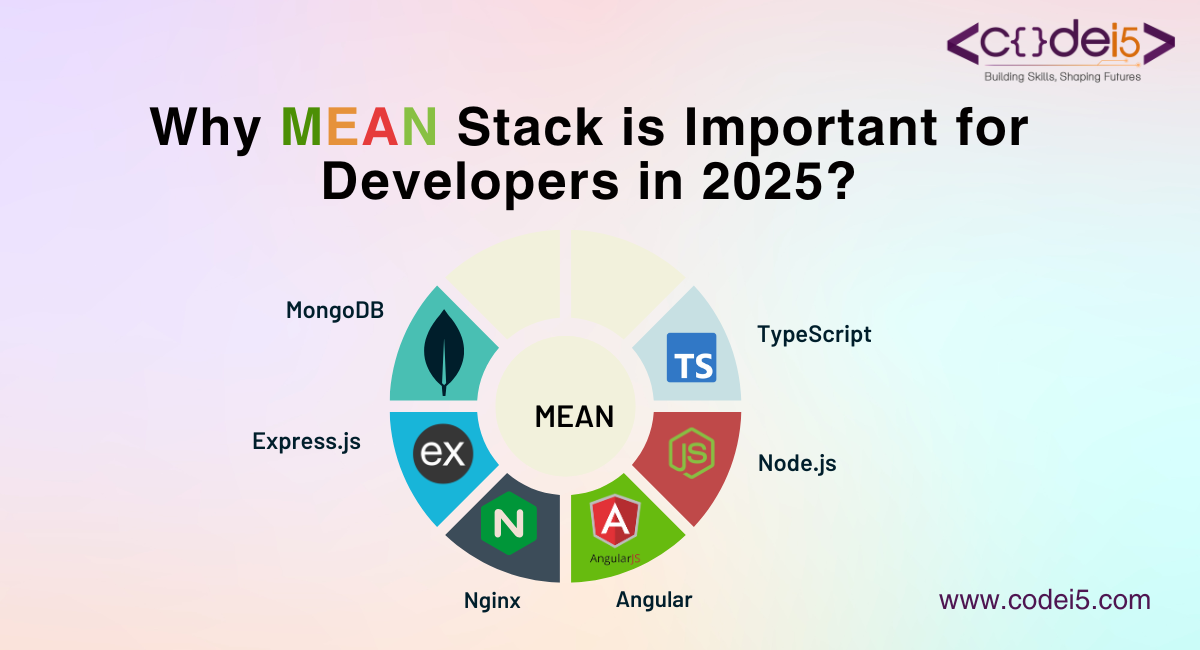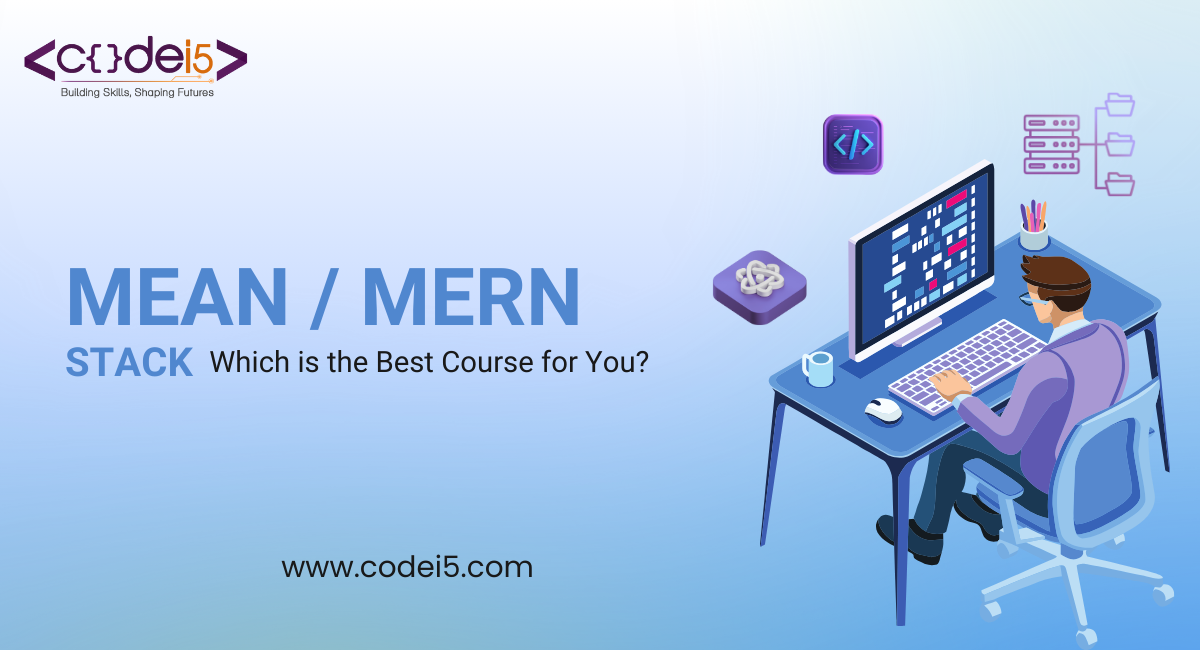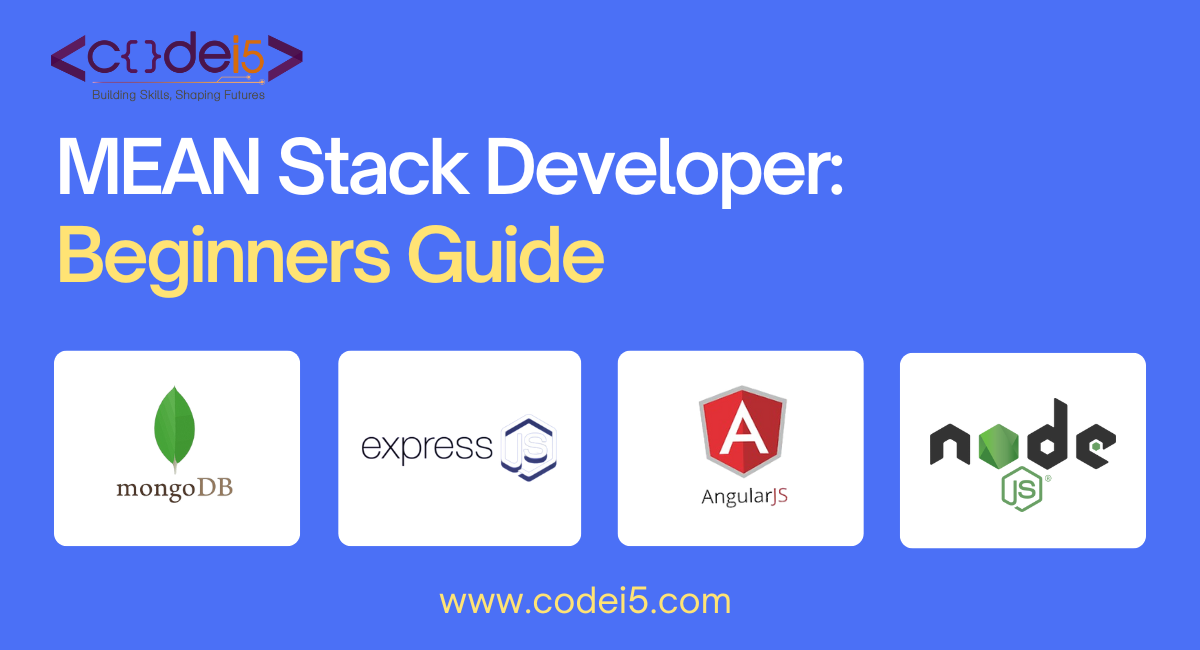
Introduction: What is the MEAN Stack?
The MEAN stack is a collection of powerful technologies used to build modern web applications. It includes MongoDB, Express.js, Angular, and Node.js, all of which use JavaScript. In simple terms, the MEAN stack allows developers to use a single programming language, JavaScript, for both the front-end and back-end of an application, making development faster and more efficient.
For MEAN stack for developers in 2025, this stack is essential because it simplifies the development process, improves scalability, and allows for better performance with cutting-edge technologies. Whether you’re building a dynamic single-page application or a full-stack web app, the MEAN stack offers everything you need to create modern, efficient, and scalable applications.
Why MEAN Stack is a Must-Learn for Developers in 2025
The MEAN stack for developers in 2025 is crucial because it enables developers to build powerful, modern web applications using only one programming language—JavaScript. This stack consists of MongoDB, Express.js, Angular, and Node.js, all of which work together to create seamless, high-performance applications.
By using the MEAN stack, developers can:
- Simplify the development process with a unified language across both the front-end and back-end.
- Create scalable applications that can grow as the business needs expand.
- Improve efficiency and speed, reducing the time it takes to develop and deploy web applications.
As the demand for faster, more dynamic applications grows, the MEAN stack for developers in 2025 offers the tools needed to stay ahead in a competitive industry. It helps developers build powerful, flexible, and responsive applications that are in demand in today’s tech landscape.
Key Benefits of the MEAN Stack for Developers
TheMEAN stack for developers in 2025 offers several key benefits that make it a top choice for building modern web applications. Here’s why developers should embrace it:
- Single Language for Full Stack Development: With the MEAN stack, developers use JavaScript for both the front-end (Angular) and back-end (Node.js), simplifying development and reducing the need to learn multiple languages.
- Faster Development: The MEAN stack’s integrated technologies work well together, allowing developers to build applications faster and with fewer complexities.
- Scalability: MongoDB provides flexible, scalable data storage, making it easier for applications to grow with the business.
- Real-Time Performance: Node.js ensures fast server-side performance, which is critical for real-time applications like messaging or live data updates.
- Large Community Support: The MEAN stack has a wide, active community, making it easier for developers to find resources, solutions, and support.
How MEAN Stack Simplifies Full-Stack Development
The MEAN stack simplifies full-stack development by allowing developers to use JavaScript for both the front-end and back-end. This means they don’t need to switch between different programming languages, streamlining the development process. With MongoDB for flexible data storage, Express.js for handling server-side logic, Angular for building dynamic user interfaces, and Node.js for fast, efficient performance, the MEAN stack provides a cohesive solution for creating powerful web applications. This unified approach makes it easier and faster for developers to build and manage modern, scalable apps.
The Role of JavaScript in MEAN Stack
JavaScript is the core language in the MEAN stack for developers in 2025, used for both the front-end and back-end. Here’s why it’s important:
- One Language: JavaScript is used throughout, making it easier to work on both the front-end (Angular) and back-end (Node.js).
- Dynamic Front-End: Angular uses JavaScript to create interactive, responsive user interfaces.
- Fast Back-End: Node.js allows JavaScript to power the server, making applications fast and efficient.
- Easy Data Handling: With MongoDB, which stores data in JavaScript’s format, developers can manage data smoothly between the front-end and back-end.
How MEAN Stack Supports Scalability and Flexibility
The MEAN stack is designed to build scalable and flexible applications. Here’s how it helps:
- MongoDB for Scalable Data: MongoDB stores data in a flexible, NoSQL format, allowing easy scaling as your application grows.
- Node.js for Fast Performance: With Node.js, applications can handle more traffic and scale horizontally, ensuring high performance even with high loads.
- Angular for Responsive UIs: Angular helps developers build responsive, adaptable user interfaces that work well across various devices and screen sizes.
- Modular Structure: The MEAN stack’s modular approach makes it easier to add or modify features, offering flexibility in development.
Real-World Applications of the MEAN Stack
The MEAN stack for developers in 2025 is used in a variety of real-world applications. Here are some examples:
- Single-Page Applications (SPAs): Social media platforms and dashboards use Angular to provide smooth, fast user experiences.
- E-commerce Platforms: MongoDB allows e-commerce sites to store and manage vast amounts of product data easily, while Node.js handles high traffic.
- Real-Time Applications: Chat applications and online gaming platforms benefit from Node.js’s ability to handle real-time interactions.
- Content Management Systems (CMS): Using MongoDB and Angular, CMS platforms offer dynamic and customizable content creation and management features.
The Future of MEAN Stack: Trends in 2025
The future of the MEAN stack in 2025 looks promising with several exciting trends. Developers will increasingly adopt TypeScript alongside JavaScript for improved code quality, especially with Angular. Performance will be further enhanced through updates to Node.js and MongoDB, making applications faster and more scalable. Serverless architecture will gain traction, enabling faster scaling and less infrastructure management. Real-time capabilities will continue to improve, making MEAN stack applications even more efficient for real-time use cases like live chats and gaming. Additionally, better integration with DevOps tools and CI/CD pipelines will streamline development and deployment processes.
Conclusion: Why MEAN Stack is Essential for Developers in 2025
In 2025, the MEAN stack will still be a top choice for developers due to its speed, scalability, and flexibility. It helps developers build powerful web apps using JavaScript for both front-end and back-end. With new trends like serverless architecture and better real-time performance, learning the MEAN stack will keep developers up-to-date. If you want to stay ahead, learning the MEAN stack is essential, and Codei5 Academy can help you get the skills you need to succeed in 2025.





